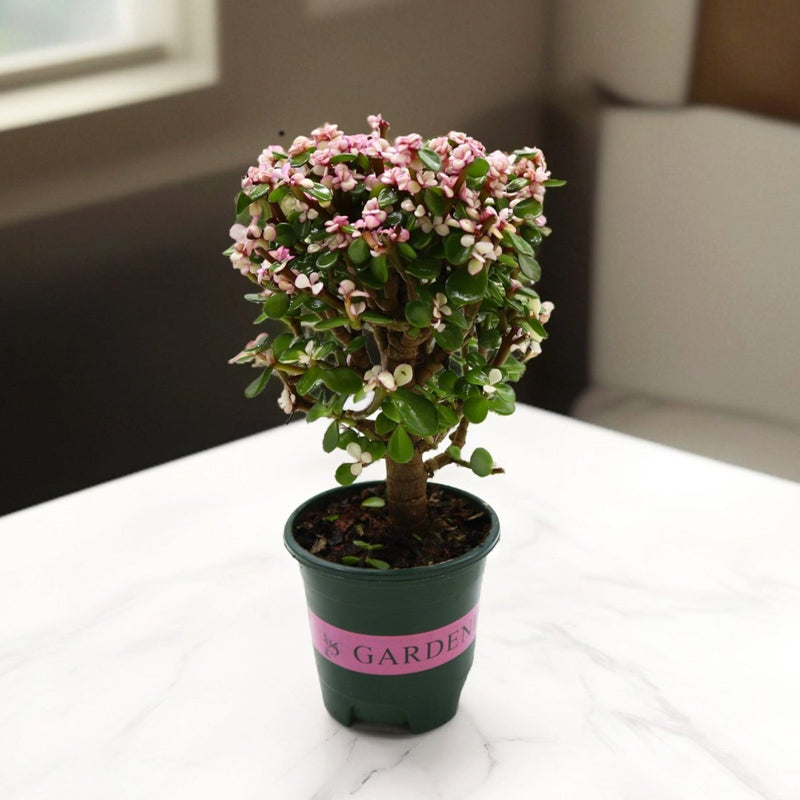Dwarf Jade Plant - Elephant Bush 15 - 20 cm
Free returns on all eligible orders
You have 7 days to request a return. All sale items are final sale.
The elephant bush (Portulacaria afra) is a fascinating and versatile succulent native to southern Africa—and yes, elephants really do munch on it in the wild 🐘🌿. Here's a full breakdown of what makes this plant so special:
🌱 Basic Characteristics
-
Botanical Name: Portulacaria afra
-
Common Names: Elephant bush, porkbush, spekboom, dwarf jade, small leaf jade
-
Appearance: Small, round, fleshy green leaves on reddish woody stems. There's also a variegated version with cream and green leaves.
-
Size: Outdoors, it can grow up to 15 feet (4.5 m) tall. Indoors, it stays compact and is often used in hanging baskets or as bonsai.
🌞 Growing Conditions
-
Light: Prefers bright, indirect sunlight but can tolerate direct sun. Outdoors, full sun is ideal.
-
Watering: Drought-tolerant—let the soil dry out completely between waterings.
-
Soil: Needs well-draining soil like cactus mix to prevent root rot.
-
Hardiness Zones: Best suited for USDA zones 10–11. Not frost-hardy.
🌸 Flowers & Growth
-
Blooming: Produces small, star-shaped pink or white flowers in clusters—but flowering indoors is rare.
-
Growth Habit: Trailing stems make it perfect for shelves or hanging planters. Can be pruned and shaped easily.
🍴 Edibility & Uses
-
Edible Leaves: Mildly tart and crunchy due to malic acid. Used in South African cuisine—soups, salads, and even traditional remedies.
-
Wildlife Favorite: Elephants, goats, and other animals love it, which can lead to overgrazing in its native habitat.
🌿 Bonus Facts
-
Eco-Friendly: Known for its carbon-storing abilities, making it a hero in reforestation and climate efforts.
-
Not a True Jade: Though it resembles jade plants (Crassula ovata), it's unrelated—and unlike jade, it's non-toxic

